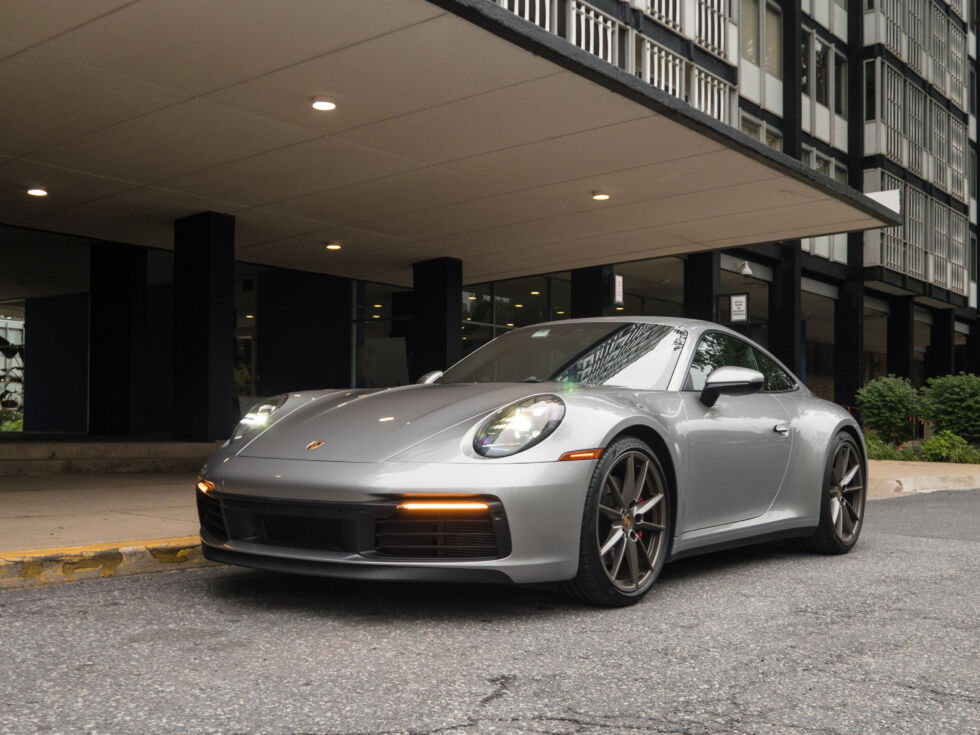The 911 Carrera S: Two pedals good, three pedals better

No, you're not mistaken, we did review a 2020 Porsche 911 Carrera S just over a year ago. But we're revisiting that model again today. [credit: Jonathan Gitlin ]
Over the years, the Porsche 911 Carrera has changed. The silhouette may still be the same, the engine is still in the back, and after all these decades, it's still a treat to drive. I won't dissect all the changes made over the years from the first 911 (nearly called a 901, until Peugeot intervened), for Ars has you covered with one of those we prepared earlier. But you only have to park the current car-known as the 992-next to an older one, even just a couple of generations old, to see the effect of time. All that extra stuff is added technology.
The 911 has grown, in length and width, largely to fit the energy-absorbing safety structures that we now reasonably expect our cars to contain. The interior uses glossy, pixel-dense digital displays instead of the old-fashioned arrangement of dials. The engines are all turbocharged now, even though it doesn't say "Turbo" on the back in that distinctive cursive typeface. This arrangement balances out the fast version of the electric Taycan being called a Turbo, but more importantly, it means the distinctive flat-six engines can meet modern emissions requirements, and there's enough power to account for the addition of weight over time. (The 911 Turbo is a separate, more expensive, more powerful model, which we would have reviewed in March, but COVID-19 set fire to those plans.)
DoppelkupplungsgetriebeAnd more often than not, the engine sends its power to the rear wheels via a PDK transmission. PDK standing of course for Porsche-Doppelkupplungsgetriebe, or Porsche double-clutch transmission. Porsche first developed PDK in the 1980s to win races at Le Mans, then tinkered with the idea for another couple of decades before debuting the technology on its road cars in 2009.
Read 13 remaining paragraphs | Comments